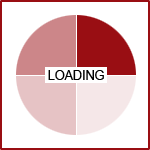How to Pass a Lead Clearance Exam in NYC: A Contractor’s 2025 Checklist
Let’s be honest — failing a lead clearance exam in NYC can bring your whole project to a halt. And in 2025, the bar for passing just got higher. Whether you’re doing rehab in a pre-1960 building or closing out a child-occupied project, here’s UNYSE’s proven contractor checklist to help you pass the first time, every time.
What Is a Lead Clearance Exam?
After lead-based paint abatement, renovation, or repair work, NYC law requires a clearance examination before the space can be reoccupied.
This exam includes:
-
A visual assessment for dust and debris
-
Dust wipe sampling from floors, windows, and sills
-
Lab analysis to confirm lead levels are below the legal threshold
It’s your final stamp of compliance — and if you fail, you can’t close out the job.
When Is a Clearance Exam Required?
You’ll need one if:
-
You’ve done renovation work in a unit with known or presumed lead paint
-
The building was constructed before 1978
-
A child under 6 lives in the unit
-
The work involved disturbing painted surfaces
-
You’re completing abatement under EPA or HUD rules
Basically, if dust was generated, the city wants proof that the unit is safe.
Why 2025 Compliance Is Tougher Than Ever
NYC is increasing oversight and failing more clearance exams due to:
-
Stricter HUD and EPA lead dust standards
-
Increased dust wipe sampling requirements
-
Fines for incomplete documentation
-
More inspections triggered by tenant complaints
That means contractors who were cutting corners in the past? They’re failing now. Rework is expensive — and delays can kill your reputation.
The Ultimate Contractor Checklist for Passing Your Clearance Exam
Want to pass your lead clearance exam the first time? Here's what to do before the inspector arrives:
1. Do a Final Deep Clean
Use HEPA vacuums and wet wipes. No dry sweeping. Dust hides in corners, vents, windowsills, and floor edges — get it all.
2. Focus on Windows and Sills
Most clearance failures in NYC happen due to elevated lead dust on window sills. Hit them hard.
3. Clean Twice
One pass isn’t enough. We recommend a first cleaning, followed by a second pass after 24 hours to catch settled dust.
4. Take “Before” and “After” Photos
Document your work — if a clearance test fails, you’ll have proof you followed best practices.
5. Label and Store Waste Properly
Don’t leave behind bags, tools, or debris. That’s an automatic visual fail.
6. Keep Non-Essential People Out
If kids, tenants, or maintenance staff re-enter before testing, the dust levels could spike again.
7. Make Sure Documentation is Ready
Have your work scope, abatement logs, and training certs on hand. The clearance inspector might ask.
What Happens If You Fail?
If your clearance exam fails:
-
You’ll need to re-clean and retest — often at your own cost
-
The unit remains off-limits to tenants
-
Delays could trigger violations from HPD or DOH
-
Multiple failures may lead to an investigation or project stop
UNYSE helps contractors avoid this with pre-clearance walkthroughs and smart cleanup guidance.
What Does UNYSE Do During a Clearance Exam?
We’re not just there to collect samples — we ensure the process is smooth, legal, and efficient. Our certified team will:
-
Conduct a visual inspection
-
Perform dust wipe sampling
-
Use NLLAP-accredited labs for analysis
-
Deliver clearance documentation for HPD, HUD, or EPA compliance
-
Advise you if something doesn’t meet standards — before it’s a problem
And since UNYSE doesn’t do abatement, there’s zero conflict of interest — just objective, accurate results.
Who Needs Clearance Exams in NYC?
This isn’t just for large buildings. You’ll need one if you're a:
-
General contractor
-
Landlord or property manager
-
Renovation specialist
-
School or daycare administrator
-
Public housing developer
Clearance exams are legally required — even for minor repair jobs in child-occupied spaces.
Where We Operate
UNYSE offers clearance exams and lead dust sampling throughout New York State, with deep experience in:
-
NYC (all 5 boroughs)
-
Buffalo & WNY
-
Albany & Capital Region
-
Syracuse, Rochester, and beyond
No matter your project location — we’ve got it covered.
Final Word: Pass the First Time, Save Your Reputation
In 2025, failing a lead clearance exam in NYC doesn’t just slow down your project — it puts your license, reputation, and bottom line at risk.
UNYSE helps contractors, landlords, and developers:
-
Pass clearance exams with confidence
-
Stay compliant with NYC, EPA, and HUD rules
-
Get accurate results, fast
-
Keep tenants safe and satisfied
Book your clearance exam today — and let us help you wrap your projects the right way.
FAQs
Q: How long does a clearance exam take?
Typically 1–2 hours depending on the unit size and number of samples required.
Q: What are the legal clearance limits for lead dust?
As of 2021:
-
Floors: 10 µg/ft²
-
Window sills: 100 µg/ft²
-
Window troughs: 100 µg/ft² (not always required in NYC)
Q: Can UNYSE do the abatement too?
No — and that’s a good thing. UNYSE only handles testing, analysis, and clearance — no bias, no pressure.
Q: How quickly can I get results?
Most results are available within 24–48 hours after sampling.

